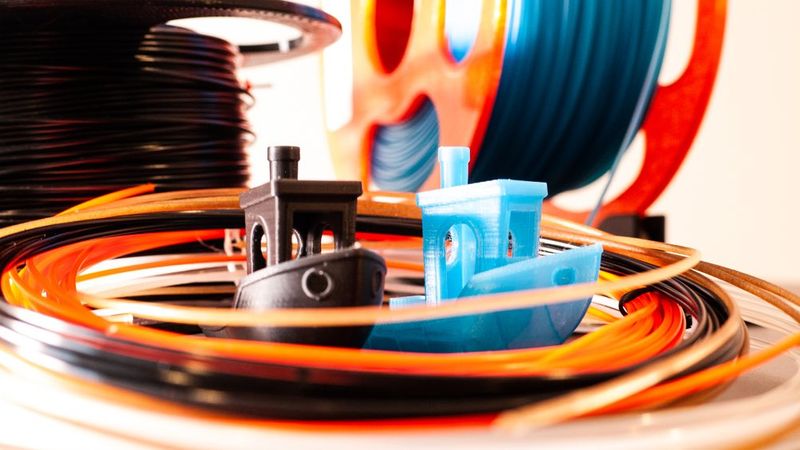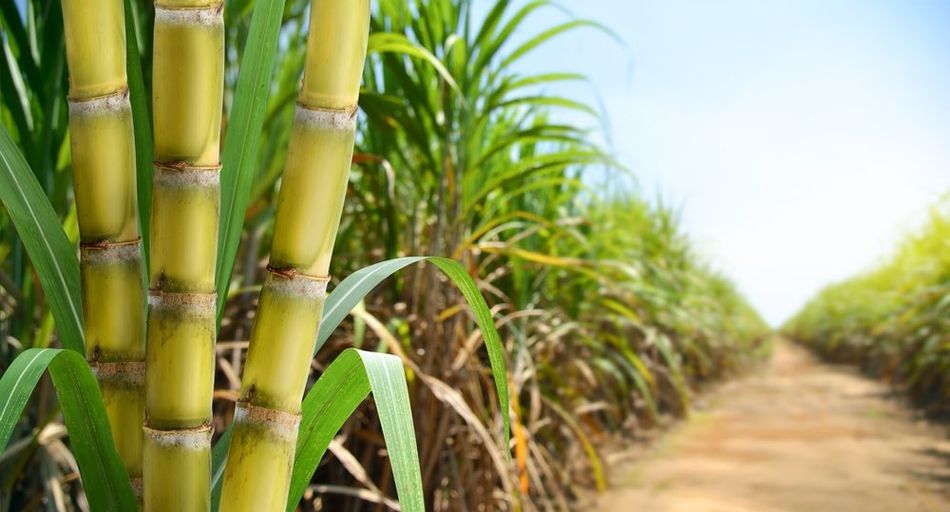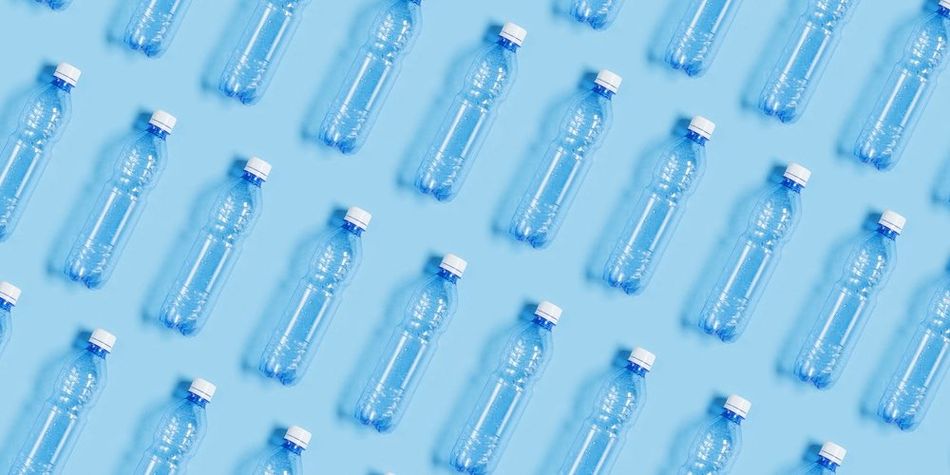PETG vs PLA: Differences and Comparison
PETG vs PLA is a question asked by many newcomers to FFF 3D printing, with both materials offering important benefits. Choosing between them often comes down to the requirements of the project.

PETG vs PLA often comes down to the needs of the project
3D printing, also known as additive manufacturing, is a process that creates three-dimensional objects from a digital file. It involves layering materials, such as plastic or metal, to create complex shapes and structures that would be difficult to achieve with traditional manufacturing methods. The choice of material is crucial in 3D printing as it determines the properties and the quality of the final product.
In the realm of low-cost FFF/FDM 3D printing, two thermoplastics often stand out due to their helpful properties and widespread use: Polylactic Acid (PLA) and Polyethylene Terephthalate Glycol-modified (PETG). PLA is a biodegradable thermoplastic derived from renewable resources like cornstarch or sugarcane, while PETG is a variant of the commonly used Polyethylene Terephthalate (PET), modified with glycol to make it more suitable for 3D printing. Since both materials are user-friendly and versatile, the question of PETG vs PLA comes up a lot for 3D printer users.
The PETG vs PLA question depends on various factors, including the object's intended use, the printer's capabilities, and environmental conditions. Each material has its strengths and weaknesses, and understanding these can help you choose the right material for your 3D printing project.
What is PLA?
 PLA can be made from sugarcane and other natural sources
PLA can be made from sugarcane and other natural sources
PLA, or Polylactic Acid, is a type of plastic that is derived from renewable resources such as corn starch or sugarcane.[1] Unlike plastics that are derived from petroleum, PLA is biodegradable under the right conditions and has a low level of toxicity, making it a more environmentally friendly option.
The process of creating PLA involves fermenting plant sugars to produce lactic acid, which is then polymerized to create polylactic acid.[2] The resulting material is a thermoplastic, meaning it becomes soft and moldable when heated and hardens when cooled. This property makes it ideal for 3D printing, where the material is heated to a liquid state and then cooled to create solid objects.
PLA's origin from renewable resources and its biodegradability are significant advantages, especially in a world increasingly concerned with sustainability. However, it is important to note that while PLA is biodegradable, it requires specific conditions to break down, such as high heat and the presence of certain microorganisms. Therefore, while it is a step in the right direction, PLA is not a complete solution to the environmental issues associated with plastic waste.
Properties of PLA
PLA is known for its unique properties that make it a popular choice for 3D printing. One of the key properties of PLA is its low melting temperature, typically around 150–160 degrees Celsius. This low melting point makes it easier to work with in 3D printers, as it requires less energy to heat, does not require a high nozzle or bed temperature, and can be cooled quickly.
In terms of mechanical properties, PLA is relatively strong and stiff compared to other plastics. A typical PLA filament has a tensile strength of around 65 MPa, which is higher than that of ABS, another common plastic used in 3D printing. However, PLA is somewhat brittle, meaning it is less resistant to impact or sudden forces.
PLA also has a high surface hardness, which means it is resistant to scratching and wear. This property makes it suitable for creating objects that need to withstand some level of friction or abrasion.
Another important property of PLA is its biodegradability. Unlike most plastics, PLA can be broken down by microorganisms into harmless byproducts, given the right conditions. This biodegradability makes PLA a seemingly more environmentally friendly option compared to other plastics. However, it is important to note that PLA requires specific conditions to biodegrade, such as high temperatures and the presence of certain microorganisms. In a typical home composting setup, PLA will not degrade effectively, nor can it easily be recycled.
Finally, PLA is a relatively safe material to work with. It doesn't emit harmful fumes when heated, unlike some other plastics used in 3D printing. This makes it a good choice for home or school environments where safety is a priority. However, it is always important to use 3D printers in well-ventilated areas to minimize exposure to any fumes or particles.
Recommended reading: PLA Recycling: Can PLA 3D Printer Filament be Recycled?
Uses of PLA in 3D Printing
PLA's unique properties make it a versatile material in the world of 3D printing. Its low melting point and ease of use make it a popular choice for beginners and hobbyists. It is often used in educational settings, where safety and ease of use are paramount.
One of the most common uses of PLA is in the creation of prototypes. Its ability to produce high-detail prints and its availability in a wide range of colors make it ideal for this purpose. Designers and engineers can quickly and affordably produce a physical model of their design, allowing them to identify and correct any issues before moving on to more expensive production methods.
PLA is also used in the production of consumer goods, such as toys, decorative items, and household goods. Its biodegradability makes it a more environmentally friendly choice for items that may be disposed of at the end of their life. However, it is important to note that PLA's biodegradability doesn't mean it will break down quickly or completely in a home composting setup.
In the medical field, PLA has been used to create surgical models, allowing surgeons to plan complex procedures ahead of time. It is also used in the creation of biomedical scaffold for implants, theranostics, and drug delivery systems.[3] Implant scaffolds can slowly dissolve in the body, eliminating the need for a second surgery to remove them.
Despite its many uses, PLA is not suitable for everything. Its low melting point means it is not suitable for objects that will be exposed to high temperatures, such as under-the-hood automotive components. It is also not as durable or impact-resistant as some other 3D printing materials, so it is not the best choice for mechanical parts or items that will be subjected to heavy use.
What is PETG?

PETG is a variant of Polyethylene Terephthalate (PET), a common type of plastic used in many consumer products, including food and beverage containers. The 'G' in PETG stands for glycol, which is added during the polymerization process.[4] The addition of glycol prevents the plastic from crystallizing, making it clearer and less brittle.
PETG is produced through a process called polymerization, which involves reacting ethylene glycol and terephthalic acid, both derived from petroleum. The resulting material is a thermoplastic, meaning it becomes soft and moldable when heated and hardens when cooled. This property makes it ideal for 3D printing, where the material is heated to a liquid state and then cooled to create solid objects.
One of the key advantages of PETG filament is its balance of properties. It offers the ease of use of PLA and the strength and durability of ABS (Acrylonitrile Butadiene Styrene), another popular 3D printing material. This balance makes PETG a popular choice for a wide range of applications, from prototypes to functional parts.
However, PETG also has its limitations. It is more difficult to print with than PLA, requiring higher temperatures and better bed adhesion. It is also more prone to stringing, where thin strands of plastic are left behind as the print head moves. Despite these challenges, with the right settings and some practice, PETG can be a versatile and high-performing material for 3D printing.
Properties of PETG
The properties of PETG make it a popular choice for FFF 3D printing. One of the key properties of PETG 3D printing filament is its higher melting temperature compared to PLA, typically around 220–260 degrees Celsius. This higher melting point makes it more suitable for objects that need to withstand higher temperatures.
In terms of mechanical properties, PETG is fairly strong and durable. A typical PETG filament has a tensile strength of around 50 MPa, which is slightly lower than that of PLA. However, PETG is more flexible than PLA, making it less brittle and more resistant to impact. This combination of strength and flexibility makes PETG a popular choice for functional parts and mechanical components.
PETG also has excellent layer adhesion, meaning the layers of a 3D print stick together well. This results in prints with high structural integrity and fewer failures due to layers not sticking together.
Another important property of PETG is its transparency.[5] While not completely clear, PETG is more transparent than most other 3D printing materials, making it a good choice for prints where some level of transparency is desired.
Finally, PETG is resistant to UV light and water, making it suitable for outdoor applications. However, it is worth noting that while PETG is resistant to many chemicals, it can be damaged by certain solvents, so it is not suitable for all environments.
Despite its many advantages, PETG is not without its challenges. It is more difficult to print with than PLA, requiring careful calibration of the printer and often a heated print bed. PETG is also more prone to stringing and oozing, where excess material is left behind as the print head moves. However, with the right settings and some practice, these issues can be minimized.
Recommended reading: PETG Stringing: What It Is & How To Prevent It During 3D Printing
Uses of PETG in 3D Printing
PETG, similar to PLA, possesses properties that render it highly versatile within the realm of 3D printing. Its durability, higher melting point, and chemical resistance make it a favored material for various applications. PETG is often preferred by those seeking enhanced resilience in their printed objects.
One of the primary applications of PETG is the creation of functional prototypes. Its ability to withstand higher temperatures and its balanced mechanical properties make it suitable for producing prototypes that require durability and moderate heat resistance. Engineers and designers frequently utilize PETG to fabricate prototypes that demand a higher level of toughness and resilience before initiating mass production.
Moreover, PETG finds extensive use in crafting consumer goods, especially items that need resilience and chemical resistance, such as containers, mechanical parts, and protective casings. Its capacity to withstand moderate impacts and its resistance to chemicals make it a preferred choice for items intended for prolonged use.
In the medical sector, PETG has found its application in creating various tools and devices. Its ability to maintain sterilization and resist degradation under certain conditions makes it suitable for certain surgical instruments and medical equipment housing.
However, similar to PLA, PETG is a low-cost material and therefore has its limitations, meaning few PETG prints become end-use parts. The material may not be ideal for objects subjected to extreme temperatures, as its heat resistance is limited compared to certain specialized materials, and it might not match the toughness of materials specifically engineered for high-impact applications.
Comparing PLA and PETG
When choosing a material for 3D printing, it is important to consider the specific requirements of the project. PLA and PETG, while both popular choices, have different properties that make them suitable for different applications. By comparing these materials in terms of their strength, durability, ease of use, and other factors, you can make an informed decision about which one is the best fit for your project.
Printability
PLA is considered one of the easiest materials to print. PLA prints at a lower temperature, doesn't require a heated bed, and is less prone to warping, making it a good choice for beginners or for projects that don't require high mechanical strength or temperature resistance. PETG can be slightly trickier to work with in terms of bed adhesion and stringing.
Strength

In terms of strength, both PLA and PETG offer good performance, but there are some key differences. PLA has a slightly higher tensile strength than PETG. However, it is more brittle than PETG, making it less resistant to impact or sudden forces. In simple terms, PLA printed parts may require greater forces to break, but when they do eventually break they can shatter into many pieces and potentially cause danger.
Resistance to Elements
In terms of suitability for outdoor use, PETG has better UV resistance and water resistance, making it suitable for outdoor applications. However, it can be damaged by certain solvents, so it is not suitable for all environments. PLA, while not as resistant to UV light and water as PETG, is biodegradable under the right conditions, which can be an advantage in certain applications.
Flexibility
PLA is a relatively stiff material, which means it has limited flexibility. While this stiffness can be an advantage in some applications, it also makes PLA more brittle and prone to cracking under stress or impact. In contrast, PETG is more flexible than PLA, allowing it to better withstand bending and impact forces. This increased flexibility makes PETG a more suitable choice for applications where the printed object may be subjected to stress or strain.
Temperature Resistance
Heat resistance is another important factor to consider when comparing PLA and PETG. PLA has a lower melting temperature, which makes it unsuitable for applications where the printed object will be exposed to high temperatures. Objects made from PLA can warp or deform when exposed to temperatures above its glass transition temperature, which is around 60-65 degrees Celsius.
PETG has a higher melting temperature and glass transition temperature, making it more suitable for applications where the printed object will be exposed to higher temperatures, such as outdoor environments or parts that will be subjected to heat.
Biodegradability and Recyclability

PLA is derived from renewable resources like cornstarch or sugarcane, making it a more sustainable option compared to petroleum-based plastics. Additionally, PLA is biodegradable under the right conditions, such as high heat and the presence of specific microorganisms. However, it is important to note that PLA's biodegradability doesn't mean it will break down quickly or completely in a home composting setup.
PETG, on the other hand, is derived from petroleum, which is a non-renewable resource. However, PETG has an advantage when it comes to recyclability. PETG can be recycled, and its recycling process is more established than that of PLA. This means that PETG products can be collected, processed, and turned into new products more efficiently than PLA.
Other Environmental Factors
PLA production generally has a lower carbon footprint compared to PETG, as it is derived from renewable resources. However, the energy required to process and transport the raw materials for PLA production can offset some of these benefits.
In a 2022 study on the environmental properties of PLA, PETG, and ABS, researchers found PETG to be the most environmentally friendly, primarily due to its recyclability. The study found that PLA had adverse effects on freshwater ecotoxicity, despite being made from natural resources. Nonetheless, both PLA and PETG were found to be more environmentally friendly than ABS.[6]
Conclusion
In the world of 3D printing, both PLA and PETG have carved out their niches due to their favorable properties and low price. PLA, with its ease of printing and biodegradability, is a popular choice for beginners and those looking for an environmentally friendly option. It is ideal for decorative items, prototypes, and low-stress applications.
PETG, with its higher strength, flexibility, and temperature resistance, is favored for functional parts and mechanical components. Its superior layer adhesion and resistance to UV light and water make it suitable for outdoor applications. Despite being more challenging to print with, its recyclability and durability make it a valuable material in the 3D printing world.
In essence, PLA vs PETG is not a matter of which is better overall, but which is better for a specific application. Understanding the properties and characteristics of each material is crucial in making an informed decision that best suits your project's needs.
Frequently Asked Questions (FAQs)
Can I use both PLA and PETG on the same 3D printer?
Yes, you can use both PLA and PETG on the same 3D printer. However, you may need to adjust the printer settings such as the printing temperature and speed to suit the material you are using. It is also important to clean the printer nozzle when switching between different materials to prevent cross-contamination.
Is PETG stronger than PLA?
In terms of tensile strength, PETG is slightly weaker than PLA but it has better flexibility, making it less brittle and more resistant to impact compared to PLA.
Can PLA and PETG be recycled?
PLA is biodegradable under industrial composting conditions, but it is not typically recycled due to the lack of suitable facilities. PETG, on the other hand, can be recycled and its recycling process is more established.
Which material is better for outdoor use, PLA or PETG?
PETG is generally better for outdoor use due to its resistance to UV light and water. PLA can degrade over time when exposed to the elements, especially in hot environments.
Which material is more environmentally friendly, PLA or PETG?
PLA is derived from renewable resources and is biodegradable with industrial facilities. However, PETG is recyclable, which can be an advantage in terms of waste management. The environmental impact of each material also depends on factors such as energy consumption and greenhouse gas emissions during production.
References
[1] Jayasekara T, Wickrama Surendra Y, Rathnayake M. Polylactic Acid Pellets Production from Corn and Sugarcane Molasses: Process Simulation for Scaled-Up Processing and Comparative Life Cycle Analysis. Journal of Polymers and the Environment. 2022 Nov;30(11):4590-604.
[2] Jem KJ, van der Pol JF, de Vos S. Microbial lactic acid, its polymer poly (lactic acid), and their industrial applications. Plastics from bacteria: natural functions and applications. 2010:323-46.
[3] Da Silva D, Kaduri M, Poley M, Adir O, Krinsky N, Shainsky-Roitman J, Schroeder A. Biocompatibility, biodegradation and excretion of polylactic acid (PLA) in medical implants and theranostic systems. Chemical Engineering Journal. 2018 May 15;340:9-14.
[4] Vidakis N, Petousis M, Tzounis L, Grammatikos SA, Porfyrakis E, Maniadi A, Mountakis N. Sustainable additive manufacturing: Mechanical response of polyethylene terephthalate glycol over multiple recycling processes. Materials. 2021 Mar 2;14(5):1162.
[5] Petrov P, Agzamova D, Pustovalov V, Zhikhareva E, Saprykin B, Chmutin I, Shmakova N. Research into the effect of the 3D-printing mode on changing the properties of PETG transparent plastic.
[6] Kumar R, Sharma H, Saran C, Tripathy TS, Sangwan KS, Herrmann C. A Comparative Study on the Life Cycle Assessment of a 3D Printed Product with PLA, ABS & PETG Materials. Procedia CIRP. 2022 Jan 1;107:15-20.
Table of Contents
What is PLA?PLA can be made from sugarcane and other natural sourcesProperties of PLAUses of PLA in 3D PrintingWhat is PETG?Properties of PETGUses of PETG in 3D PrintingComparing PLA and PETGPrintabilityStrengthResistance to Elements FlexibilityTemperature ResistanceBiodegradability and RecyclabilityOther Environmental FactorsConclusionFrequently Asked Questions (FAQs)Can I use both PLA and PETG on the same 3D printer?Is PETG stronger than PLA?Can PLA and PETG be recycled?Which material is better for outdoor use, PLA or PETG?Which material is more environmentally friendly, PLA or PETG?References